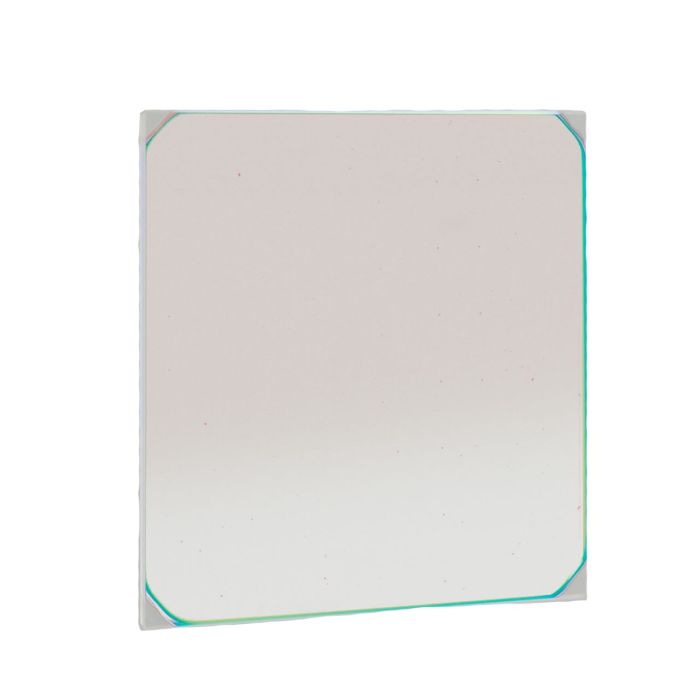Astronomik L-3 UV-IR Blocking Filter - 50 mm Square
Astronomik UV-IR Blocking Luminance Filters
The Luminance channel is perhaps the most critical aspect of creating a superb final image. In order to achieve the greatest signal quantity, the filter being used should have the highest possible transmission with a wide spectral bandpass. These two elements allow for the highest sensitivity and give you maximum photon counts on your pixels. Even though the high level of transmission is an excellent characteristic of these new Luminance filters, perfect color correction is not universal on all optical instruments, or additional optical elements such as correctors, reducers, and flatteners. Thus, problems may arise due to the Luminance filter's spectral bandpass width. Stars may appear soft or bloated due to the transmission of incompletely focused light (chromatic aberration) if the band pass is too wide. When this happens, image processing can be difficult. However, this damaging result can be reduced or completely nullified by having a spectral window that is slightly narrower in your Luminance filter.
Astronomik has updated their Luminance filter line to include three different spectral window widths so that you can match your L filter to the type of telescope you use. The "L-2" filter is very similar to the classic Astronomik Luminance filter. By contrast, the L-1 has a wider spectral window, while the L-3's spectral window is narrower.
The color correction of your telescope will determine whether you should use a filter with a wider spectral window for the Luminance data. For the widest spectral window, choose the L1 filter; and for the narrowest spectral window, choose the L3 filter. The middle ground contains the L2 which has about the same size spectral window as Astronomik's current L-Filter.
If your optical system is completely chromatic aberration free, you should get an L1 filter for your setup. For general use with most optical systems employing a corrector, flattener or reducer in the optical train, the L2 is optimal. The L3 filter is made for users with refractors that have less than ideal color correction. Plus, when used in conjunction with Astronomik's new Deep-Sky RGB filters, the L3 filter will reduce that annoying bluish halo around stars.
The transmission curve characteristics and coatings on the new Luminance filters have been designed and engineered in such a way that no halos or reflections will be visible. Even with bright stars in the field of view you will be able to reveal the faintest structures in galaxies or nebulae.
Like all Astronomik Filters, the new Luminance filters are made using an extremely durable and scratch resistant coating, deposited on the finest polished optical substrate, which is free of any striae or internal strains. All substrates are made to exactly the same thickness, so all Astronomik filters are parfocal.
Astronomik UV-IR Blocking Luminance Filter Highlights
- Parfocal with all other filters made by Astronomik
- Offers total protection against the negative impacts of scratching, aging, and high humidity
- This filter is diffraction limited and thus will not compromise the optical performance of your telescope
- Astronomik filters come with a long-lasting, superior quality plastic storage container


